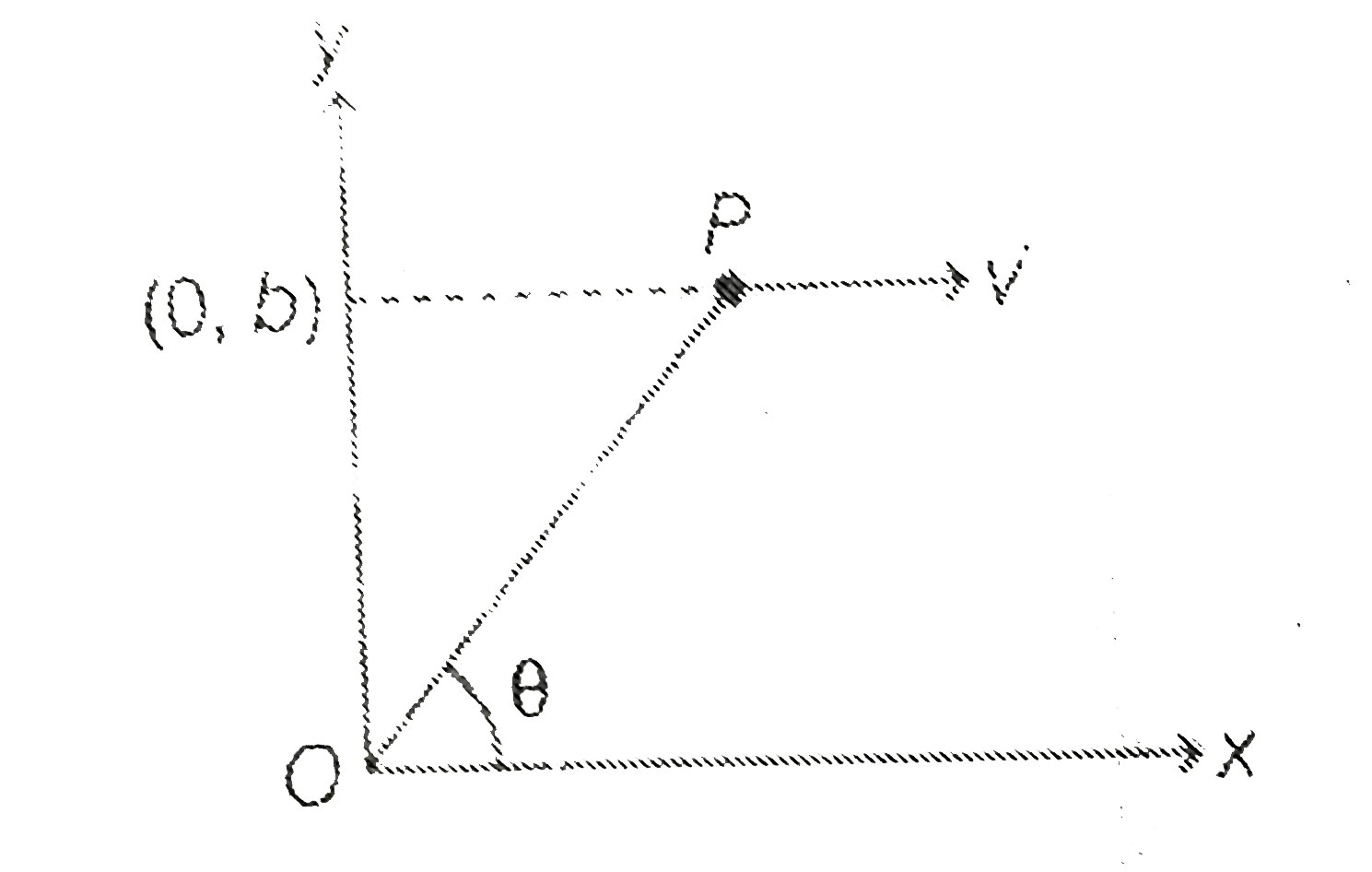Two particles move parallel to x - axis about the origin with the same amplitude and frequency. At a certain instant they are found at distance A3 from the origin on opposite sides but their velocities are found to be in the same direction. What is the phase difference between the two ?
Let equation of two SHM be
x1=Asinωt …(i)
x2=Asin(ωt+ϕ) …(ii)
Given, A3=Asinωt
and −A3=Asin(ωt+ϕ)
Which gives sinωt=13
sin(ωt+ϕ)=−13
From Eq. (iv), sinωt cosϕ+cosωt sinϕ=−13
⇒13cosϕ+√1−19sinϕ=−13
Solving this equation, we get
or cosϕ=−1,79
⇒ϕ=π or cso−1(79)
Differentiating Eqs. (i) and (ii) we obtain
v1=Aωcosωt
and v2=Aωcos(ωt+ϕ)
If we put ϕ=π, we find v1 and v2 are of opposite signs .Hence, ϕ=π is not acceptance.
∴ϕ=cos−1(79)
Similar Questions
Two particles execute SHM of same amplitude and frequency on parallel lines. They pass one another when moving in opposite directions each time their displacement is one thhird their amplitude. What is the phase difference between them?
View SolutionTwo waves are propagating with same amplitude and nearly same frequency in opposite direction, they result in
View Solution
Knowledge Check
Two particles move parallel to x−axis about the origin with same amplitude 'a' and frequency ω. At a certain instant they are found at a distance a/3 from the origin on opposite sides but their velocities are in the same direction. What is the phase difference between the two?
Acos−1.79Bcos−1.59Ccos−1.49Dcos−1.19Two particles executes S.H.M. of the same amplitude and frequency along the same straight line. They pass one another when going in opposite directions, each time their displacement is root three by two times amplitude. The phase difference between them is
A2π3 radBπ2 radCπ6 radDπ3 radTwo bodies performing S.H.M. have same amplitude and frequency. Their phases at a certain instant are as shown in the figure. The phase difference between them is
_E01_002_Q01.png) A116πBπC53πD35π
A116πBπC53πD35π
Two particles are in SHM with the same amplitude and frequency along the same line and about the same point. If the maximum separation between them is √3 times their amplitude, what is the phase difference between them?
View SolutionTwo very small particles are executing SHM along very near parallel lines about the same mean position, same amplitude and the same frequency. At t=0 both the particle are moving with speed of 1m/sec but on the opposite side of the mean position and having same direction of velocity at a distance of 5cm from the mean position. At t=4sec they are at the same position moving with speed of 1m/sec but in opposite direction. Assuming that this is the minimum time form t=0 where they are meeting for the 1st time. If the maximum speed of either particle is xπ4√2cm/sec Find x
View SolutionA particle is moving parallel to x-axis as shown in the figure. The angular velocity of the particle about the origin is

View SolutionTwo particles execute simple harmonic motion of the same amplitude and frequency along close parallel lines. They pass each other moving in opposite directions each time their displacement is half their amplitude. Their phase difference is
View SolutionTwo particle are in SHM on same striaght line with amplitude A and 2A and with same angular frequency ω. It is observed that when first particle is at as distance A√2 from origin and going toward mean position, other particle is at extreme postion on other side of mean positon. find phase difference betwenen he two paricles.
View Solution